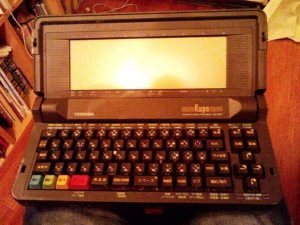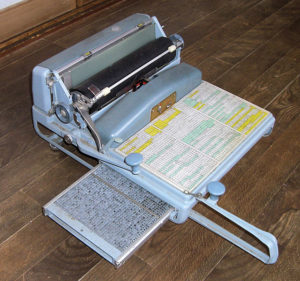Blog
2018.04.02
Patent translation
Surprising Facts about Patent translation in Japan in the Analogue age
When our CEO started working as a patent translator, computers and word processors did not yet exist. So naturally, you would ask yourself, how did patent translators do their work at this time?
At first Patent Translation was handwritten
It is pretty simple. Translators wrote the translation on paper by hand. They wrote sentences like “This invention is related to …“ on brown template paper in B5 format. Every translator had his own favourite pencil, mechanical pencil or pen.
In the beginning, our CEO was working mostly on chemistry-related patents and sometimes long patent specifications had more than 100 pages. You really had to take care not to misspell terms like “alkyl methyl butyl“. If you decided to go for a different translation of a technical term, it was not possible to search and replace all words automatically like you can with a software, but you had to check the whole text and revise every word individually.
Japanese typewriters become popular
The manuscript of the translator would then be typed by special typing companies using mechanical typewriters for the Japanese language. In contrast to English typewriters that have keys for the whole alphabet, Japanese typewriters had exchangeable stamps for the Chinese characters that could be exchanged as needed.
The typed manuscript would then be submitted to the patent office. If the translator had bad handwriting that was hard to read for the typist, it could happen that they used the wrong characters in the typed manuscript.
Therefore it was necessary to double-check the typed manuscript with the original, which resulted in another complicated step in the process.
Submission of the Translation to the Japanese Patent Office by Postal Mail
So what is the next step? As it was not yet possible to submit patent applications online, the patent specification had to be submitted to the patent office by postal mail. Sometimes you just barely made it to the post office in the evening of the day of the deadline.
The Japanese word processor makes everything easier

Japanese word processors are called “Wapuro”. (Photo by yuichirock/ CC BY)
Later the word processor became popular in Japan. In the beginning, our firm only had a limited number of word processors in the office and translators would take turns.
The word processors were slow and would freeze if you typed to fast. This time marked a big change from handwritten text to text typed on a keyboard. Those who did not get used to word processors or computers were left behind.
Nowadays would you laugh, but at that time everyone was desperate. Some people could only type with their two index fingers and other people who did not understand the concept of a mouse tried to use it in midair.
The word processor made a lot of processes simpler, especially because of the search and replace function. If you decide to change the translation of a term, you now can change all words in just one step. This had a positive impact on the correct translation of technical terms. Especially in patent translation, there were a lot of technical terms that were not recorded in the word processor by default and had to be added manually. But after that work would progress a lot faster.
I hope you enjoyed this little flashback to the past. Now we are of course using state-of-the-art technologies for our translations. If you are interested in our services please do not hesitate to contact us.




Leave a Reply